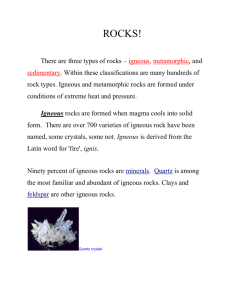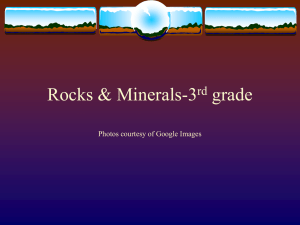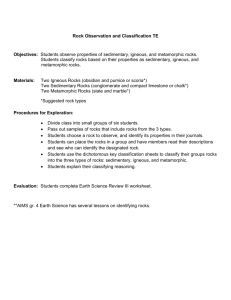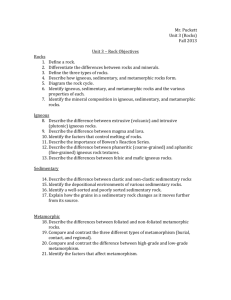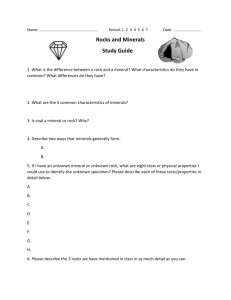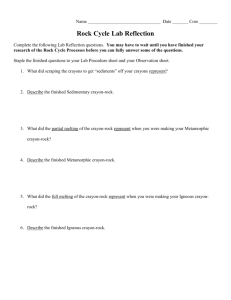7 th Grade Week 17 PSSA Review – Due Friday 12/18
advertisement
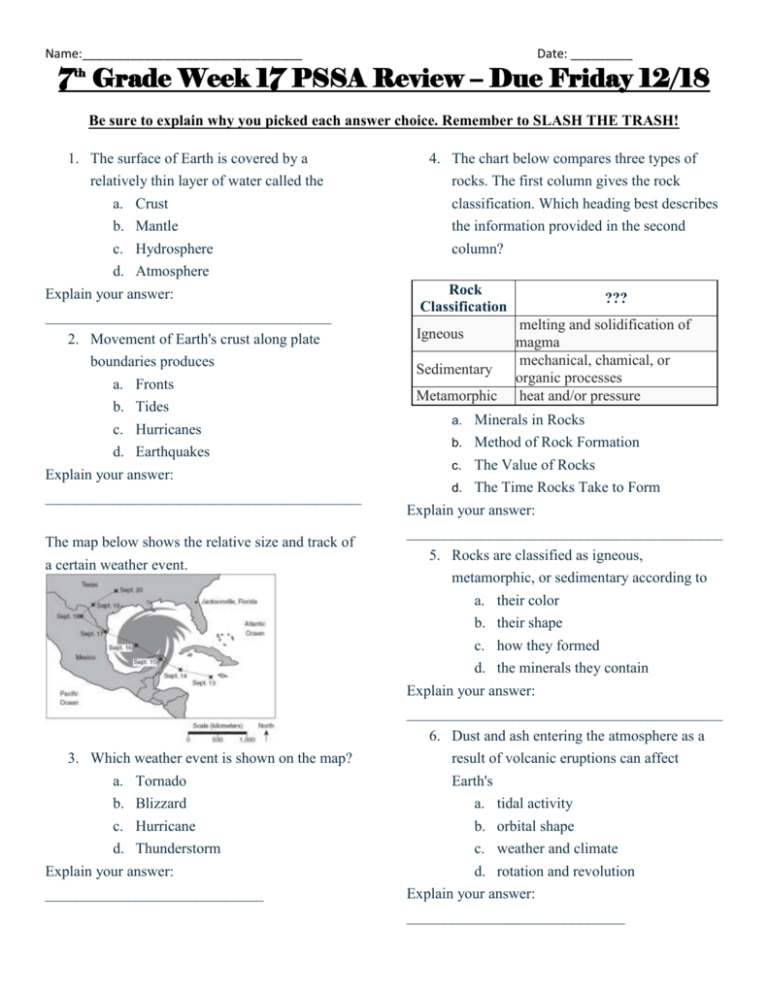
Name:________________________________ Date: _________ 7th Grade Week 17 PSSA Review – Due Friday 12/18 Be sure to explain why you picked each answer choice. Remember to SLASH THE TRASH! 1. The surface of Earth is covered by a relatively thin layer of water called the a. Crust b. Mantle c. Hydrosphere d. Atmosphere Explain your answer: ______________________________________ 2. Movement of Earth's crust along plate boundaries produces a. Fronts b. Tides c. Hurricanes d. Earthquakes Explain your answer: __________________________________________ The map below shows the relative size and track of a certain weather event. 3. Which weather event is shown on the map? a. Tornado b. Blizzard c. Hurricane d. Thunderstorm Explain your answer: _____________________________ 4. The chart below compares three types of rocks. The first column gives the rock classification. Which heading best describes the information provided in the second column? Rock Classification Igneous Sedimentary Metamorphic ??? melting and solidification of magma mechanical, chamical, or organic processes heat and/or pressure Minerals in Rocks b. Method of Rock Formation c. The Value of Rocks d. The Time Rocks Take to Form Explain your answer: a. __________________________________________ 5. Rocks are classified as igneous, metamorphic, or sedimentary according to a. their color b. their shape c. how they formed d. the minerals they contain Explain your answer: __________________________________________ 6. Dust and ash entering the atmosphere as a result of volcanic eruptions can affect Earth's a. tidal activity b. orbital shape c. weather and climate d. rotation and revolution Explain your answer: _____________________________ Name:________________________________ The map below shows some geologic features located near the west coast of the United States. Date: _________ 10. Igneous rocks are formed by a. Weathering, erosion, cementing, and compaction b. Intense heat and pressure c. Lava melting and cooling d. Volcanic activity 11. Sedimentary rocks are formed by a. Weathering, erosion, cementing, and compaction b. Intense heat and pressure c. Lava melting and cooling d. Volcanic activity 7. The arrows on either side of the fault represent a. volcanic eruptions b. rock formations c. the relative movement of air masses d. the relative movement of tectonic plates Explain your answer: _________________________________________ 8. Weather forecasts are more accurate today than in the past due to a. global warming b. air-quality control c. plate tectonics d. use of images from space Explain your answer: _______________________________________ 9. Metamorphic rocks are formed by a. Weathering, erosion, cementing, and compaction b. Intense heat and pressure c. Lava melting and cooling d. Volcanic activity 12. Which types of rocks have fossils a. Metamorphic b. Igneous c. Sedimentary d. Volcanic Explain your answer: __________________________________________ 13. How can an igneous rock change into a metamorphic rock? 14. How can a metamorphic rock change into an igneous rock?





